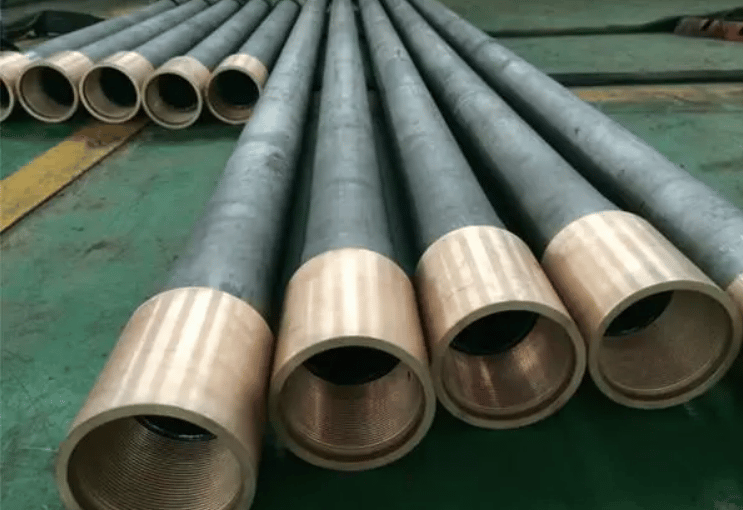If you are in the oil industry, you probably know upset and non-upset tubing. Upset Tubing (EUE) is a long tubing with a joint installed in a wellbore to facilitate the extraction of oil and gas. Non-upset tubing (NUE) refers to the pipe end without the extra thick and straight thread and collar. API 5CT specified the specifications for three different connectors for use as casing tubing joints: External-upset tubing and coupling (Upset tubing), Non-upset tubing and couplings and Integral-joint tubing. Upsetting is a mechanical process that increases the wall thickness of a tube, which is manufactured by applying a hot forge at the ends of the tube and begins by heating the tube’s end. Then, a punch is inserted into the tube bore, which limits the flow to the upsetting die. The procedure increases the tube’s wall thickness and provides additional machining stock for joining. The result is a larger cross-section at the end of the tube, allowing for a thread cut to form on the tubing’s end. Upset tubing is often used for offshore oil production because of its ability to prevent leaks and increase service life.
Upset tubing is a steel pipe that has threads on both ends used to transport fluids, like oil, gas, and water. Upset design is better for drilling situations where depth is an issue. The tool joints are larger and stronger than the tube walls, allowing the stress to be transferred back to the tube and weld. However, it is important to remember that upsetting does not affect ultimate tensile or yield strength. When selecting the threaded end on an upset tubing product, it is important to understand the difference between a standard API upsetting Tubing and non-upsetting Tubing. In this article, you’ll learn how to choose the best tubing for your particular well and the conditions you’ll encounter when using it.

The strength of upset tubing is a function of the thread profile and the minimum yield strength. It also accounts for the difference in microstructure and is a good indication of the quality of the product. The thread profile determines the strength of the coupling. When the threads are tightened, the coupling can carry the tensile load without breaking. However, when the load is too great, it can cause an upset of the inside diameter.
The difference between fatigue cracks in upset and non-upset tubing is often difficult to recognize. The difference is largely due to the material volume of the latter. In order to calculate the material volume of a longitudinal element, we use the area of the annular slice times the length of the pipe. This is the most common type of fatigue crack. It occurs in a variety of materials. This is why it is critical to identify the type of crack occurring in a specific piece of tubing. There are several factors that influence the occurrence of fatigue cracks. These factors include the steel, the type of process used for the fabrication of the pipe, and the location of the cracks.
When talking about the price, the upsetting tubing and non-upset tubing may be the same material and grades. The biggest difference between them are the tube end, which is the outer diameter. In addition, Non-upset tubing is used much less than EUE tubing. The cost of NUE and the joint strength is substantially less that of EUE. API NUE joints are available in sizes of 1.050 to 4.500. The coupling joint diameter of NUE is less than EUE, which offers some advantages when clearance is small.
Oil tubing is the main part of the well-drilled construction. We know that tubes for the oil industry differ in their size and shape based on their API configuration. API upsets can be forged in a single operation. Internal upsets are typically thinner than external upsets and can increase the wall thickness by as much as 100%. Finally, although the external thickening of tubing increases the connection strength of tubing, it has to be achieved through the upsetting and secondary heat treatment process, which is inefficient and increases the required time and potential cost.






